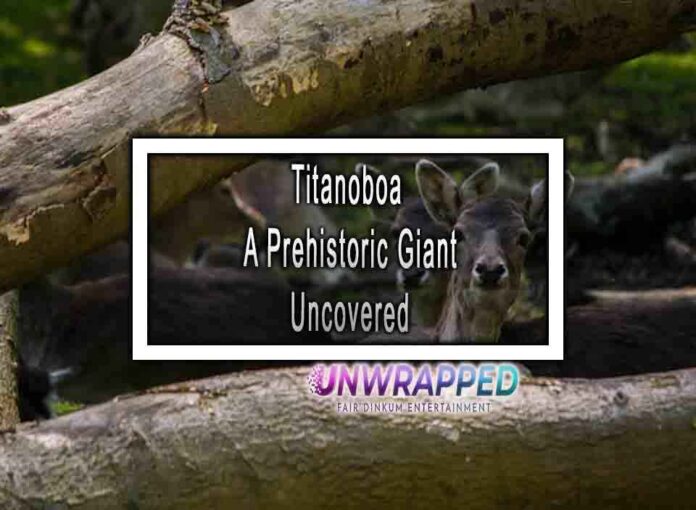Titanoboa was a colossal, prehistoric snake that lived approximately 58 to 60 million years ago, during the Paleocene epoch. Here’s an exploration of this ancient giant:
1. Size and Anatomy:
- Colossal Dimensions: Titanoboa is considered the largest snake ever known to exist, with estimates suggesting it reached lengths of up to 42 feet (about 13 meters) or more.
- Hefty Build: Unlike modern snakes, Titanoboa had a robust and heavy build, reflecting its enormous size.

2. Discovery and Fossils:
- Cerrejón Formation: Fossils of Titanoboa were discovered in the Cerrejón Formation in La Guajira, Colombia, a site known for preserving a rich diversity of prehistoric flora and fauna.
- Multiple Individuals: The discovery included multiple individuals, allowing scientists to study variations in size and better understand the species.
3. Paleoenvironment:
- Tropical Climate: During the Paleocene, the Cerrejón region had a tropical climate, with high temperatures and abundant rainfall.
- Aquatic Ecosystem: Titanoboa likely inhabited a freshwater ecosystem, such as swamps or rivers, where it could thrive as an apex predator.
4. Diet and Feeding Habits:
- Carnivorous Diet: As a snake, Titanoboa was a carnivore, preying on a variety of vertebrates, including fish, amphibians, and possibly early mammals.
- Ambush Predator: Its large size and muscular build suggest that Titanoboa was an ambush predator, striking at prey from a concealed position.
5. Climate and Gigantothermy:
- Tropical Climate Influence: The warm climate of the Paleocene is believed to have contributed to Titanoboa’s gigantic size.
- Gigantothermy: Being ectothermic (cold-blooded), Titanoboa would have relied on external heat sources to regulate its body temperature. A larger body would have helped it maintain optimal temperatures in a warm environment.
6. Coexistence with Other Megafauna:
- Diverse Fauna: Titanoboa lived alongside a diverse array of prehistoric animals, including giant turtles, crocodilians, and large fish.
- Apex Predator Role: As the largest predator in its ecosystem, Titanoboa played a crucial role in shaping the dynamics of the local food web.
7. Extinction:
- Geological Changes: Titanoboa went extinct around the time of the Paleocene-Eocene Thermal Maximum (PETM), a period associated with significant global climate change.
- Ecological Shifts: Changes in climate, habitat, and the composition of ecosystems may have contributed to the extinction of Titanoboa and other species.
8. Scientific Significance:
- Insights into Paleocene Ecosystems: Titanoboa fossils provide valuable insights into the structure and functioning of Paleocene ecosystems, offering a glimpse into the ecological interactions of the time.
- Paleoclimate Studies: The discovery contributes to our understanding of how climate influences the evolution and size of organisms over geological time scales.
Titanoboa stands as a remarkable example of the diversity and size of prehistoric life, offering a window into the ancient ecosystems of the Paleocene and the extraordinary adaptations that allowed certain species to reach colossal proportions.











